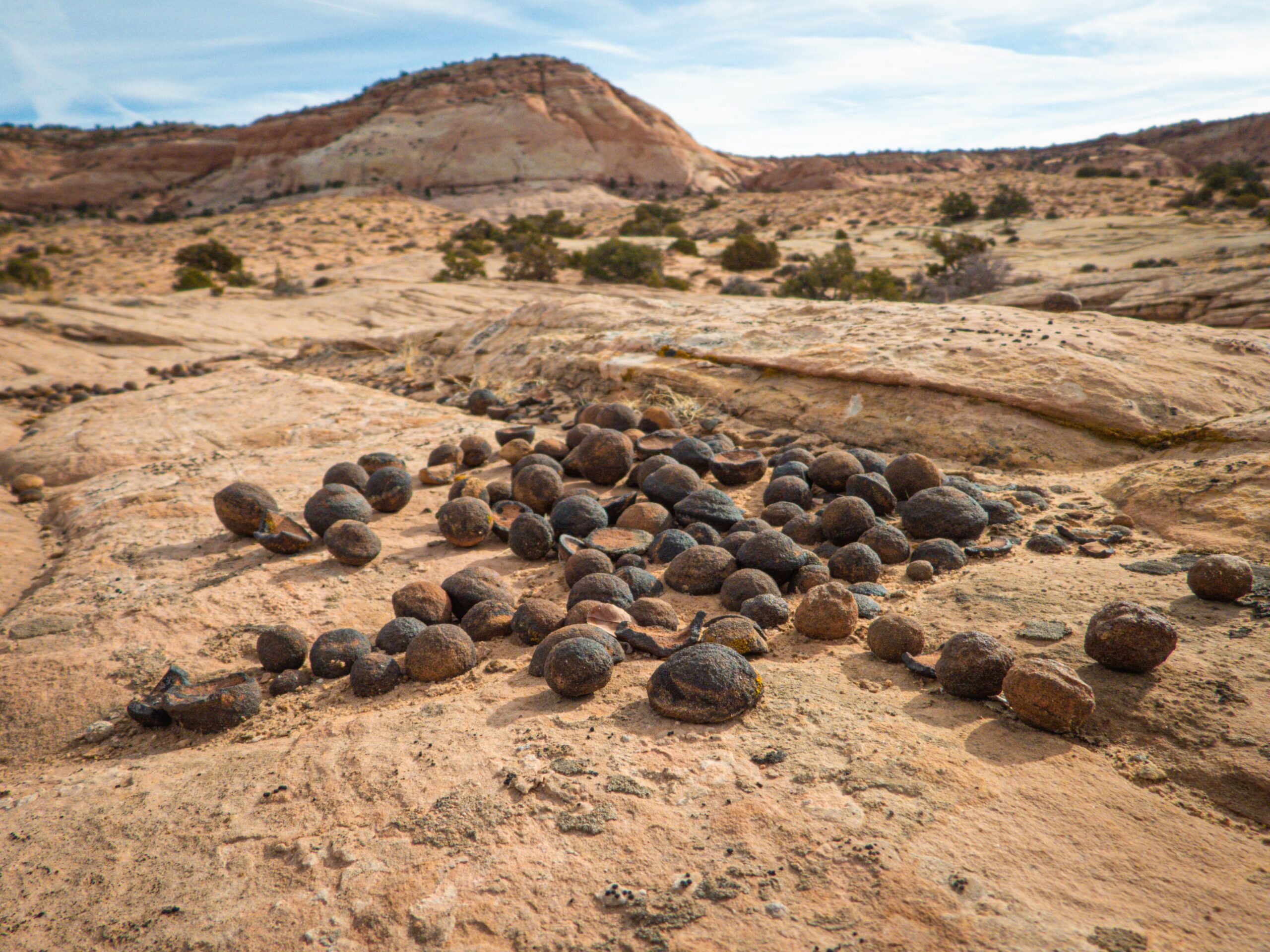
In January 2004, after a journey of six months and 47 million miles, NASA’s Opportunity rover finally touched down safely on the surface of Mars. Minutes later, it sent back an astonishing image from its new surroundings, an equatorial region known as the Meridiani Planum. In the foreground and littering the ground in every direction were small spheres several millimeters in diameter that against the dusty red backdrop of the Martian surface appeared a steely blue-gray. The NASA team back on Earth quickly began calling them “blueberries”.
The blueberries are concretions of hematite, a mineralized form of iron. On Earth, hematite forms only in the presence of liquid water. Prior to the mission, researchers knew that liquid water was present on Mars up until about two billion years ago, but the finding sparked new excitement for the possibility of finding evidence of life on the red planet. Was the subsurface habitable? What other secrets might be hidden in the rock?
Now, research going on right here at Grand Staircase-Escalante National Monument is furthering our understanding of how the blueberries formed and their implications for the possibility of life on Mars. Many who have visited GSENM will be familiar with our own blueberries, also called “moqui marbles”, which can be commonly be found strewn loosely across slickrock. They are one of the many outstanding geological oddities at GSENM. Like the Martian blueberries, moqui marbles are concretions of iron that formed in porous rock then fell out by gravity when the parent rock encasing them was eroded.
Sally Potter-McIntyre, Associate Professor of Geology at University of Southern Illinois, recently published an article that investigated the optimal conditions for the formation of moqui marbles in the Entrada sandstone at GSENM. She described two theories that had been posed. First, that they were formed when a reducing solution that mobilizes iron ions mixed with an oxidizing solution within the sandstone, wherein the concretions precipitated as nodules. An alternate theory was that an acidic iron-bearing solution, when it permeated the rock, encountered preexisting calcium carbonate concretions that had formed earlier when the sandstone layer was deposited. The acid reacted with the carbonate, precipitating iron concretions in their place.
In the article, Potter-McIntyre notes, however, that iron and carbonate concretions still exist in close proximity to each other within the Entrada sandstone and that iron takes a very long time to precipitate. If formation is strictly the result of fluid mixing, then why was carbonate still present? Instead, her work points to a third explanation. Iron concretions, she proposes, were precipitated from fluid that was transported from an intrusion of igneous host rock. The rock’s structure acted as a baffle (block) that selectively kept the fluid stagnant in certain places, allowing for the concretions to precipitate over a long period of time while other places were mostly unaffected. The structure of the rock, in other words, is also an important factor in how water flows through sandstone and the chemical reactions that occur among its minerals.
In a presentation to the 16th Europlanet Science Congress in 2022, Natalia Zalewska and Leszek Czechowski of the Space Research Center in Warsaw, Poland discussed the similarity of moqui marbles in the Dakota formation at GSENM to Martian blueberries discovered by Opportunity. They noted that when iron concretions fall out of parent rock, they undergo additional chemical reactions that coat them with a glassy, mineralized surface. Spectral analysis by the rover showed that this mineralization was similar between the two types of concretions, an indication that liquid water may have flowed across the blueberries after they were freed from parent rock. “We found significant correlation between the Utah concretions of the Dakota Formation and those found by the Opportunity rover,” Zalewska & Czechowski concluded.
These findings have far-reaching implications for our understanding of the geologic history of Mars, including its distant past when liquid water flowed over its surface, and underscores the importance of Earth environments as an analog for space exploration. Protecting these places provides tangible, real-world insights into our own origins.
[Photo credit Mike Newbry/Unsplash]

